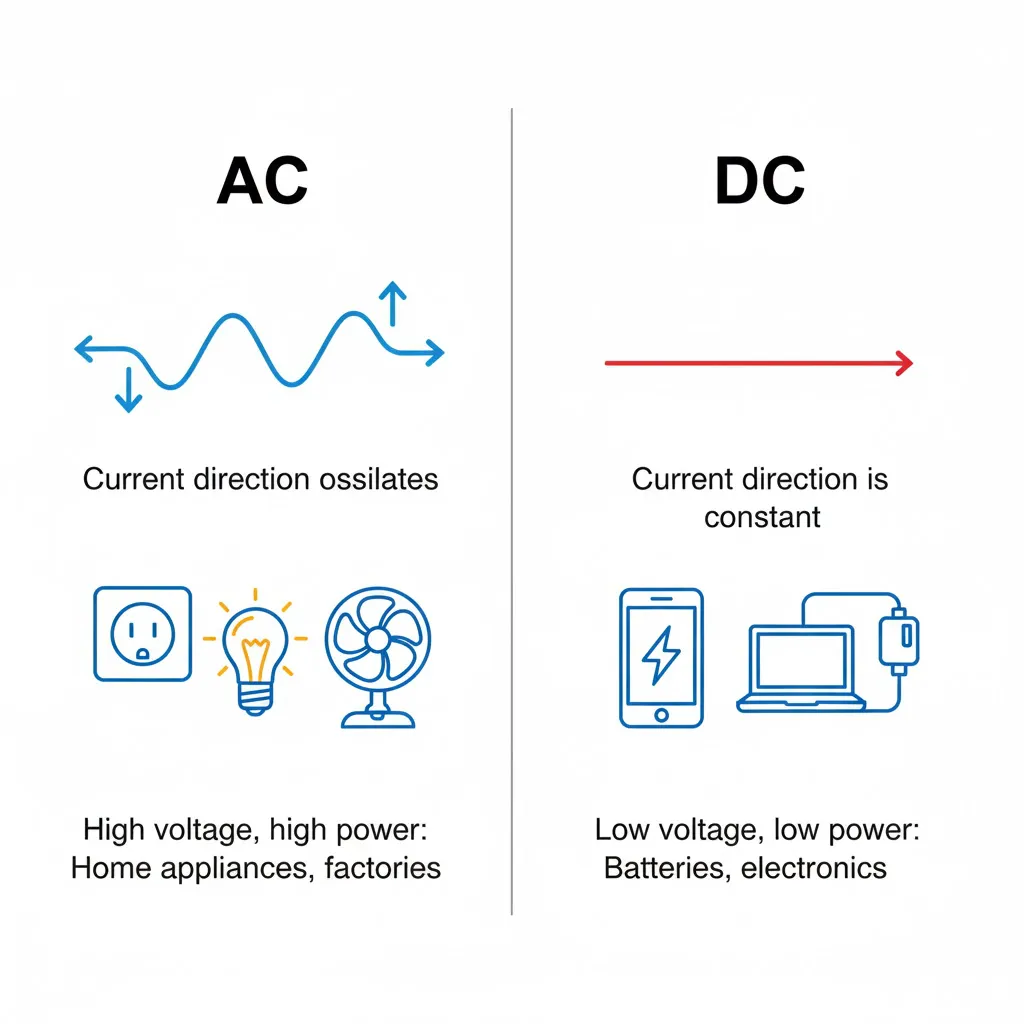Time: 2025-04-30 00:40:03 Source: Henan Province Jianyun Cable Co., Ltd.

Understanding whether home electricity is AC (alternating current) or DC (direct current) is key to safely using appliances, wiring systems, and integrating modern technologies like solar power. This article explores the question through three key sections, using a table to compare AC and DC, and engaging analogies to clarify concepts.
AC (alternating current) and DC (direct current) are the two types of electrical current, differing in how they flow and their applications. The table below summarizes their key differences:
| Aspect | AC (Alternating Current) | DC (Direct Current) |
|---|---|---|
| Flow Direction | Reverses periodically (e.g., 50 Hz in Europe) | Flows in one direction |
| Voltage | Easily transformed (e.g., 230V to 12V) | Constant (e.g., 12V, 48V) |
| Typical Use | Home electricity (e.g., 230V outlets) | Batteries, solar panels (e.g., 48V) |
| Efficiency | Better for long-distance transmission | Better for low-voltage electronics |
AC (Alternating Current): AC periodically reverses direction, typically at 50 Hz (Europe, Asia) or 60 Hz (North America). This oscillation makes it ideal for transforming voltages using transformers, enabling efficient long-distance power transmission (e.g., from power plants to homes via HT lines, as discussed).
DC (Direct Current): DC flows in one direction, providing a constant voltage (e.g., 12V in batteries, 48V in solar systems, as discussed). It’s common in electronics, batteries, and renewable energy systems, but less efficient for long-distance transmission due to higher losses without transformation.
AC and DC are like “rivers” of electricity—AC is a “tidal river” that flows back and forth, while DC is a “steady stream” that flows in one direction, each suited to different “terrains” (applications).
Home electricity is almost always AC (alternating current). In most countries, household power is delivered as AC at standard voltages like 230V (50 Hz) in Europe, Asia, and Australia, or 120V (60 Hz) in the U.S. and Canada. This is because AC is more efficient for power distribution over long distances and can be easily transformed to different voltages for various uses.
Why AC for Homes?
Exceptions with DC: While home electricity is AC, some devices within the home use DC internally. For example, electronics like laptops convert AC to DC (e.g., 19V) using adapters, and solar systems (e.g., 48V DC with 4mm² cables, as discussed) generate DC, which is converted to AC by inverters for home use.
Home electricity being AC is like a “universal language” for power—it’s the standard “dialect” that homes and grids “speak,” making it easy to connect and distribute electricity everywhere.
The fact that home electricity is AC has several implications for wiring, appliances, safety, and integration with modern technologies:
Practical Example: In a typical home, 230V AC powers a kitchen outlet via 14-2 NM-B wiring, protected by a 15A breaker. A solar system (e.g., 48V DC) might feed into the home through an inverter, converting DC to 230V AC to power the same outlet, ensuring seamless integration.
AC in homes is like a “highway system” for electricity—it’s built for long-distance travel (transmission) and wide compatibility (appliances), but “local roads” (DC devices) connect via “interchanges” (converters) for specific needs.
Home electricity is AC (alternating current), typically 230V (50 Hz) or 120V (60 Hz), because AC is efficient for long-distance transmission, easily transformed, and compatible with most appliances. AC differs from DC (direct current), which flows in one direction and is used in batteries, solar panels (e.g., 48V with 4mm² cables), and electronics after conversion. Homes use AC wiring (e.g., 14-2 NM-B), protected by devices like circuit breakers, while solar systems integrate via inverters. Understanding AC’s role ensures safe wiring, appliance use, and integration of modern technologies like solar power, aligned with standards like IEC 60446 and NEC.